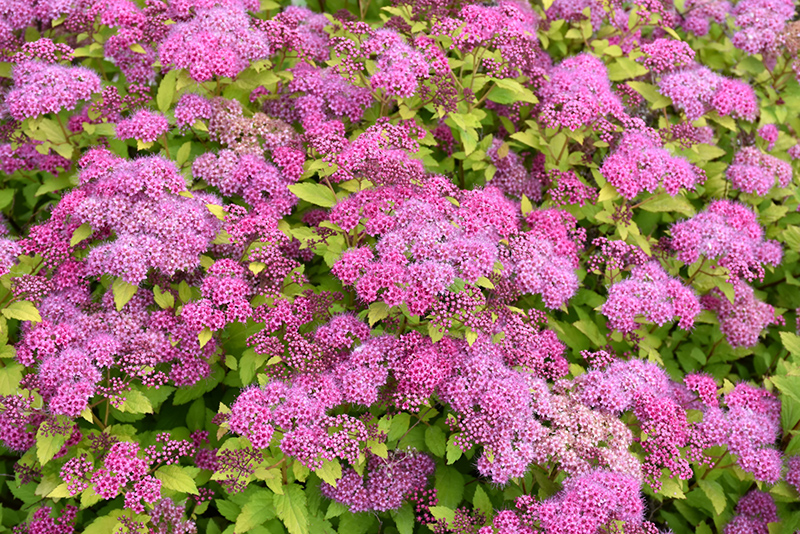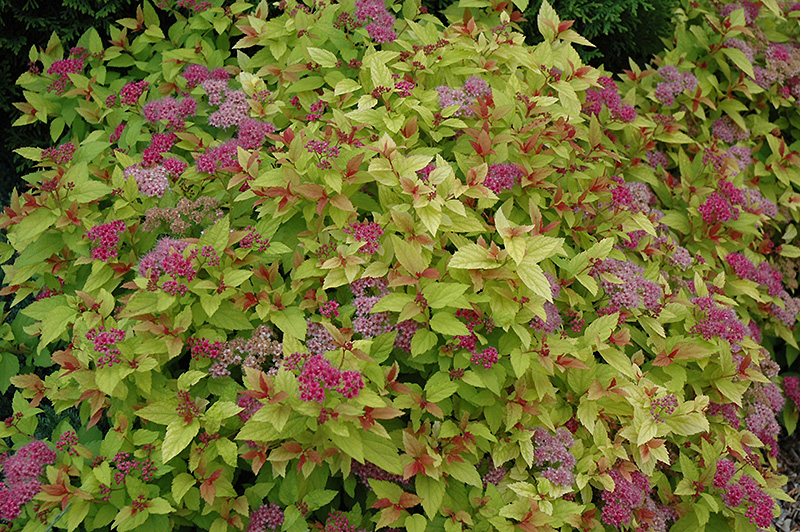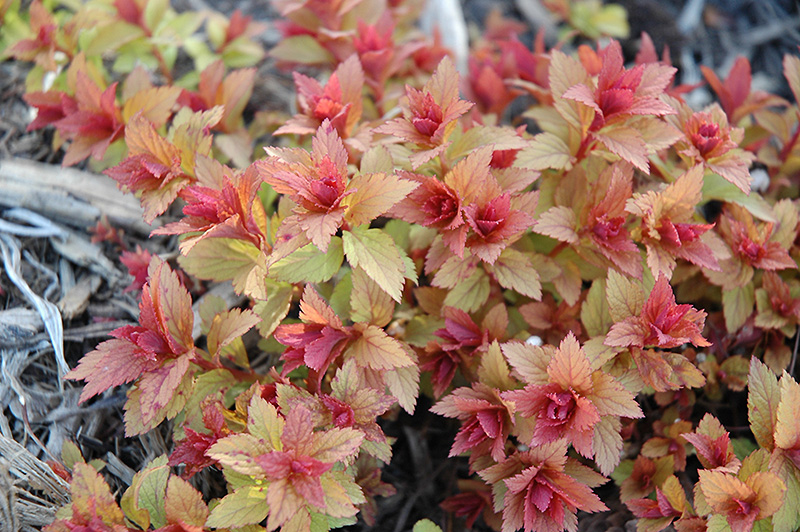Spiraea, Magic Carpet Spiraea x bumalda 'Magic Carpet' Height: 24 inches Spread: 24 inches
Sunlight:
Hardiness Zone: 3b Other Names: Spiraea japonica Description: A first rate garden detail shrub for color effect, with foliage emerging bright red fading to yellow in summer, turning deep red in fall, and showy flat-topped clusters of pink flowers in early summer; forms a dense, compact ball, neat and tidy Ornamental Features Spiraea, Magic Carpet features showy clusters of hot pink flowers at the ends of the branches from late spring to early summer. It has attractive yellow deciduous foliage which emerges tomato-orange in spring. The small serrated pointy leaves are highly ornamental and turn an outstanding scarlet in the fall. Landscape Attributes Spiraea, Magic Carpet is a multi-stemmed deciduous shrub with a more or less rounded form. Its relatively fine texture sets it apart from other landscape plants with less refined foliage. This shrub will require occasional maintenance and upkeep, and is best pruned in late winter once the threat of extreme cold has passed. It is a good choice for attracting butterflies to your yard, but is not particularly attractive to deer who tend to leave it alone in favor of tastier treats. It has no significant negative characteristics. Spiraea, Magic Carpet is recommended for the following landscape applications; Planting & Growing Spiraea, Magic Carpet will grow to be about 24 inches tall at maturity, with a spread of 24 inches. It tends to fill out right to the ground and therefore doesn't necessarily require facer plants in front. It grows at a medium rate, and under ideal conditions can be expected to live for approximately 20 years. This shrub does best in full sun to partial shade. It prefers to grow in average to moist conditions, and shouldn't be allowed to dry out. To help this plant achive its best flowering performance, periodically apply a flower-boosting fertilizer from early spring through into the active growing season. It is not particular as to soil type or pH. It is highly tolerant of urban pollution and will even thrive in inner city environments. This particular variety is an interspecific hybrid.![]()
![]()
![]()
![]()
![]()
![]()
![]()
![]()
![]()
![]()
![]()
![]()
![]()
![]()
![]()



